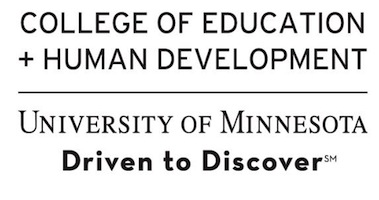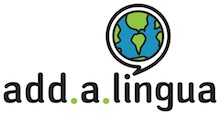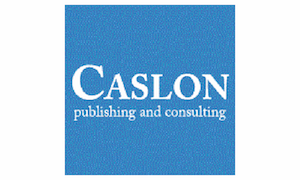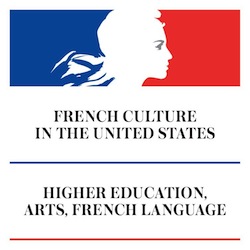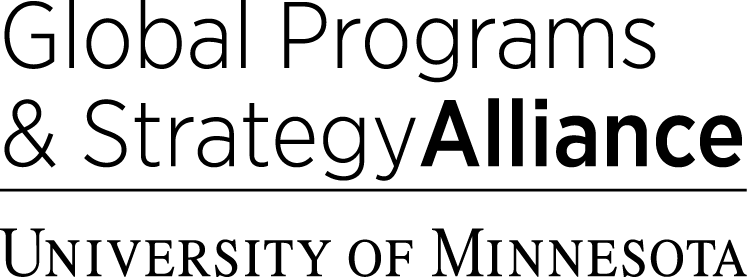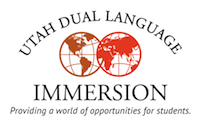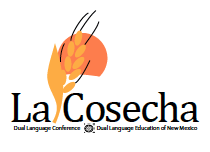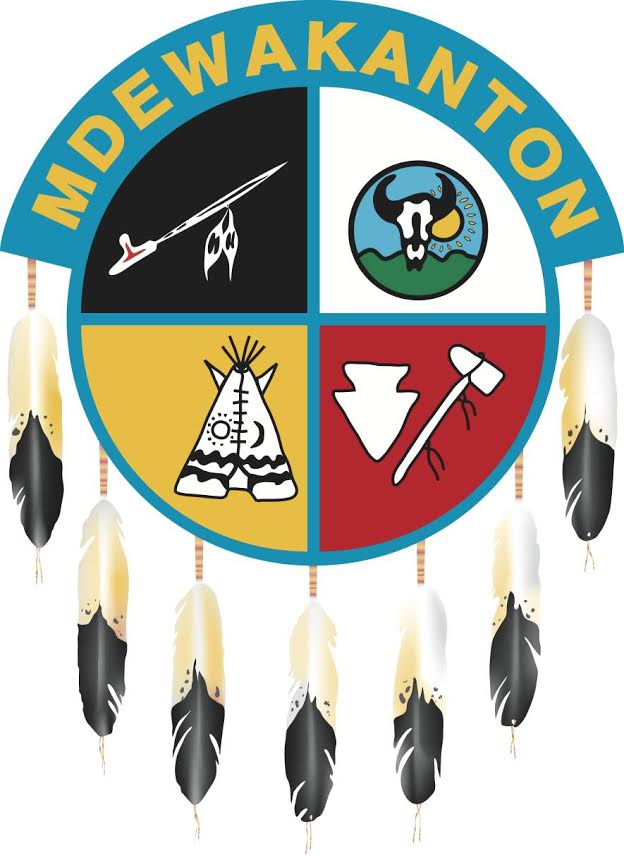Invited Symposia
Staying True to the Spirit of our Languages and Cultures in Indigenous Language Immersion
Brian McInnes, Organizer
Language immersion programs present a hopeful and potential means of sustainably revitalizing threatened Indigenous languages. Dakota, Native Hawaiian, Ojibwe, and Quechua peoples are all actively working to strengthen and grow program models in their traditional territories. Indigenous language immersion has emerged as a unique class of bilingual education program based on its purpose, overall approach to teaching and learning, adaptation of academic standards and assessment, and the incorporation of cultural perspectives in practice. Adapting ancient languages and incorporating land-based cultural traditions within the framework of contemporary school-based programming is not without challenge. Mainstream learning environments, resources, and pedagogical structures may, in fact, be contradictory to traditional Indigenous models. Discussion of how Native language immersion programs from around the world determine and fulfill their operational goals in such contexts offers both important insight into the Indigenous language immersion paradigm, and inspiration for other groups. This is particularly important when the first speakers who helped found such programs find themselves passing the leadership baton to new generations of second language learner teachers.
Founded in the spirit of cultural maintenance and survival, Indigenous language programs are an important part of strengthening both community and identity. The incorporation of cultural products, practices, and perspectives is a shared feature with other world language models. It is, however, in the depth and degree of cultural investment that Indigenous language programs stand alone. The spiritual nature of Indigenous languages requires a unique approach to teaching and learning. Exploring the different experiences of varied tribal groups in maintaining the spirit of language and culture in language immersion programs may point towards a continuum of Indigenous immersion practice that can help scholars and educators better understand, create, and maintain such programs as sustainable sources of hope, academic achievement, and cultural prosperity.
Emerging Indigenous Second Language Programs
Presenters:
Čhaŋtémaza- Bdote Learning Center
Brooke Ammann - Waadookodaading Ojibwe Language Immersion School
Many global Indigenous languages are threatened or on the verge of extinction. Creating language immersion programs for children are widely viewed as a means of sharing the language as broadly as possible in the community context. In many cases, only a few surviving tribal elder speakers remain and teaching staffs must work collaboratively with fluent speakers to revitalize language before it disappears. With language tied closely to identity in Indigenous contexts, the stakes are high. Emerging programs face the special challenge of creating general vocabulary, adapting cultural methods of education to school-based contexts, and forging new cultural syntheses of teaching and learning. A unique quality of hope and heroic determination characterizes such efforts which are on the forefront of their nations' need to reclaim language, culture, and identity. Cultural and spiritual connections are vital inclusions in programs that seek authentic community recognition and engagement.
Established Indigenous Second Language Programs
Presenters:
Brooke Ammann - Waadookodaading Ojibwe Language Immersion School
Kalehua Krug - Native Hawaiian Language Immersion Program
Contemporary Indigenous models of language immersion education were initiated decades ago by Maori and Native Hawaiian peoples. These efforts are known throughout the world for their success in helping create thousands of speakers of the target language who embrace the cultural traditions of their peoples. Such immersion efforts now run from birth through Ph.D level programming, and offer long-term hope and inspiration for the continued adaptation and survival of Indigenous peoples and survival. In such established program models, strong standards for language and culture learning have been developed alongside academic content objectives. Language revitalization efforts in schools are partnered with those in the home and community, and initiatives to train future language teachers are robust. The successes and challenges faced by established programs are unique in ensuring that new sources of knowledge and learning practices are compatible with Indigenous modalities.
Maintenance Programs for First Language Speaking Communities
Presenters:
Kalehua Krug - Native Hawaiian Language Immersion Program
Elizabeth Sumida Huaman - Quechua Language and Culture Education
Indigenous language education for first language speakers of Native tongues remains a viable and important consideration in a global context. This applies equally to tribal groups who have successfully revitalized their languages to the point of raising first speaking children within the home setting, or peoples who have not lost their language but are beginning to feel the stresses of acculturation for the first time. How to grow Indigenous languages into new contexts of linguistic and cultural actualization—where language learning considerations become secondary to the development of cultural perspective—is a desired and necessary goal for all Native nations committed to quality long-term immersion efforts.
- knowing_the_dakota_language_2016.pdf (PDF, 110 KB)
- symposiumspiritoflang_culture-2016.pdf (PDF, 2.45 MB)
- woli_carla_immersion_2016.pdf (PDF, 1.29 MB)
Immersion for ALL: The Suitability of Immersion for ALL Students
Fred Genesee, Organizer
The presentations in this symposium will discuss the learning outcomes of young dual language learners who are at risk for low language, reading and academic achievement owing to low socio-economic status, specific language impairment, learning disabilities, and others. Educational implications of this research will also be considered..
Dual Language Development in Preschool Children with Language Learning Difficulties
Presenter:
Fred Genesee - McGill University
Children with language learning disabilities are often thought to be poor candidates for learning two languages on the assumption that learning two languages is more difficult than learning one. There is a growing body of research on preschool-age dual language learners with language learning impairments. Examination of these children's acquisition of two languages during the preschool years allows us to examine their innate ability to learn more than one language without formal instruction or support. This, in turn, allows us to establish reasonable expectations about exposing these children to more than one language in home and school settings. This presentation will review research on children with specific language impairment, Down Syndrome, and Autism Spectrum Disorder, all childhood disorders that are thought to have a genetic basis that impairs their ability to acquire two languages. The results of this review will be discussed in terms of their implications for education of such children.
Educational Trajectories of At-Risk Latino EL Students in Dual Language Programs
Presenter:
Kathryn Lindholm-Leary - San Jose State University
This presentation uses longitudinal data to examine language development and achievement trajectories of 1415 fourth- through eighth-grade dual language EL students who begin school at risk. Findings indicate that by fourth through eighth grades, students vary significantly in English language proficiency. In examining four groups of students who vary from Beginning to Fluent English proficient, results indicate that students in these groups vary significantly in background characteristics, such as SES and special education, and in all outcome measures (language proficiency in English and achievement as measured in Spanish and English): Fluent English Proficient outscored and were more advantaged than Advanced, who outscored Intermediate, who scored higher than Beginners. Results indicate that at-risk EL students are more similar in kindergarten and first grade, but show different trajectories of growth across the grade levels.
The Achievement of Students Identified with Special Needs in Two-Way Spanish Immersion Schools in Arlington, VA
Presenter:
Dr. Marjorie L. Myers - Key School
The test scores of students attending Two-Way Immersion and regular education programs in Arlington County Public Schools, Virginia, and who were identified as developmentally delayed, emotionally disturbed, learning disabled, and with other health impaired will be presented. The students were both ELLs and English speakers. The academic success of children with special needs was as strong in the dual language as the students in the regular elementary programs. The inclusion model in Two-Way Immersion at Key Elementary School ~Escuela Key for "at risk" children with special needs or English Language Learners will also be shared.
An important caveat whenever there is a discussion about Two-Way Immersion versus an English-only elementary education -- the TWI students leave school with more; they leave with two languages.
Research-based Guideposts for Intervention Practice
Presenter:
Tara Williams Fortune - CARLA, University of Minnesota
Research from the past decade has shed additional light on our ability to predict and identify second language learners who may be at-risk for reading difficulties earlier (Deacon, Wade-Woolley, & Kirby, 2007; Erdos, Genesee, Savage, & Haigh, 2014; Jared, Cormier, Levy, & Wade-Woolley, 2006). For example, we now know that early literacy measures of certain sub-skills in a Kindergartener's first language can successfully predict second language reading outcomes and difficulties later on, in Grade 2 or 3. From the perspective of the immersion and dual language practitioner this information opens the door to providing early, more timely intervention. However, relatively few studies have examined effective intervention practices for children learning through two or more languages. This presentation will briefly discuss existing findings and offer best practice recommendations for providing meaningful support to immersion and dual language learners with reading difficulties.
-
Research-Based Guideposts for Intervention Practicesres_based_intervention_final_22oct2016ppt.pdf (PDF, 1.9 MB)
-
Lindholm-Leary - Educational Trajectories of At-Risk Latino ELLs in Dual Language Program
-
Achievement of Students with Special Needs in Spanish Immersioncarla_presentation.pptx (MS PowerPoint, 4.41 MB)
-
GENESEE Dual Language Capacity for Typically Developing & At-Risk Learners
The Role of Context in Translanguaging
Deb Palmer & Susan Ballinger, Organizers
In the past decade, a paradigm shift has occurred in the field of language education regarding our understanding of how bilinguals use their languages to learn both content and new language practices. While the prevailing mentality among immersion and content-based language educators prior to this shift was that learners' languages should be kept strictly separated in order to fully develop each language system, researchers now increasingly call for pedagogical practices that bridge learners' languages, encouraging learners to draw on all their language practices as they strive to develop cognitive, linguistic, and academic skills. These practices are often collectively labeled 'translanguaging.'
Nevertheless, translanguaging remains controversial, both as a term and in practice. First, we struggle to define and understand translanguaging in a consistent manner, leading to confusion over what can and cannot be labeled translanguaging. Some note the lack of research supporting claims for the benefits of translanguaging, as well as the lack of information regarding how to translate it into concrete teaching methods. They argue that we need to better understand how to strike a balance between systematically using students' primary language as a resource, and maintaining ample opportunities for target language input and practice.
Others argue that interpretations of translanguaging must be context-specific: practices that are beneficial in one context may be inappropriate and even harmful in others. In this symposium, four speakers from different language immersion contexts will explore translanguaging pedagogies. Each will explain their conceptualization of translanguaging, whether/how it translates into pedagogical practice, and potential benefits and pitfalls that may attend translanguaging practices in the classroom contexts that they represent.
The Potential of Translanguaging to Reveal Young Bilinguals' Developing Narrative Competence and Bilingual Identities: Doing "Being Bilingual" in a Preschool Spanish/English Dual Language Bilingual Education Program
Presenter:
Mileidis Gort - The Ohio State University
Drawing on qualitative analyses of preschool-age, emergent bilinguals' story retelling, this presentation will highlight the potential of translanguaging – or the deployment of a speaker's full linguistic repertoire – to reveal young children's language and literacy learning and to perform their developing bilingual identities. The analysis focuses on the post-read aloud story retellings of three preschool-age, US-born emergent bilinguals of Latino heritage who represent varying, but typical, bilingual experiences of children in this multilingual, US southeastern urban area. Participants drew on a variety of representational systems (e.g., illustrations, text, gestures) and their emerging bilingual competence to retell book-based stories, and evidenced their conceptualization of the retell task as well as their developing narrative and oral storytelling competence. Children's translanguaging practices revealed their dynamic linguistic and cultural funds of knowledge, scaffolded their formalized language performances and experimentation with academic discourse and new language forms, and reflected the language norms and practices of their linguistically and culturally diverse community. Such analyses of emergent bilingual children's languaging practices provide insight into the complex dynamics involved in doing "being bilingual" in a preschool Spanish/English dual language bilingual education program.
Translanguaging in the heritage language context
Presenter:
Tina Hickey - University College Dublin, Ireland
This contribution will consider the impact of translanguaging in heritage language settings in particular, where a majority language such as English and a threatened minority language such as Welsh or Irish co-exist. While acknowledging the potential benefits of translanguaging for some learners in these settings, there is also the possibility that it may have unintended consequences for others. Research showing the need to consider a range of child, school and societal factors will be discussed. Child-level factors include pupils' age, language proficiency, language learning motivations and preferences, and family language proficiency; school-level factors include the language balance among pupils, the curriculum goals, and the language aims of the school; while relevant societal factors include the status of each language and general attitudes to them. Consideration will be given to identifying ways in which heritage language settings could implement translanguaging practices that reap benefits while still remaining sensitive to such factors.
Translanguaging as Resource in a Dual Language Bilingual Education Context
Presenter:
Susana Ibarra Johnson - University of New Mexico
Integrating the rich ways that bilingual students do literacy in their everyday lives to scaffold and support student learning is essential in this session. Translanguaging has the potential to improve biliteracy instruction, relationships with students and students' own comprehension and engagement by taking up a translanguaging stance, design, and moves. This session presents how a bilingual teacher and her students use translanguaging as a resource for thinking, remembering, and discussing by sembrando juntos [planting together] seeds of biliteracy learning with bilingual texts. The Cuentame Algo activity shared in this session demonstrates how students use translanguaging to make meaning of bilingual texts by using their dynamic language practices with those used in school?juntos?to leverage deep understandings. Taking up a translanguaging stance can potentially provide bilingual students a space in which they can draw upon their growing knowledge of the functions, intentions, and power of written and spoken language.
Challenging the use of English as an essential scaffold in French immersion
Presenter:
Roy Lyster - McGill University
French immersion in Canada has striven to create classroom settings that maximize students' exposure to French L2 and opportunities to use it in communities that are otherwise predominantly English-speaking. In spite of these efforts, it has been well documented that French immersion students use English increasingly as they progress through the program, expressing dissatisfaction and hesitation concerning their use of the L2 and reaching a plateau in their French L2 development around the same as their use of English L1 increases.
This paper will argue that more use of English in French immersion will lead neither to greater fluency in French nor more confidence in using it. I will take the position that the use of English L1 by French immersion students is a result of the socio-political context in which they live—where English, with its increasingly global status, is dominant and considered sufficient. The driving question will be: What scaffolding techniques are more likely than English L1 to support continued development of both L2 proficiency and content knowledge?
- GORT presentation: Potential of translang to reveal young emergent bilinguals' developing narrative competence and play-based meaning-making
carla_2016_gort_translang_symp_to_share.pdf (PDF, 1.71 MB) - challenging_the_use_of_english_in_fi.pdf (PDF, 720 KB)
- carla_2016_10_22.pdf (PDF, 738 KB)
- translanguaging_in_the_heritage_language_contextfinal_tina_hickey_handout.pdf (PDF, 117 KB)
Educational Innovations in Immersion Teacher Preparation and Development
T.J. Ó Ceallaigh, Organizer
The supply of teachers with the mandatory linguistic and cultural competencies and associated pedagogical practices is a key driver of successful immersion programs across a variety of models e.g., one-way second/foreign language immersion; co-official/regional language immersion; two-way bilingual immersion; one-way developmental bilingual education; and Indigenous language immersion. Immersion teacher preparation and development therefore, is a critical step in the evolution of effective language immersion education globally. However, there is a significant dearth of research "on a wide variety of topics relating to teacher development" in immersion (Tedick & Wesely, 2015). One such topic is that of language and content integration, a topic which is central to the process of understanding immersion teaching and learning.
Despite the diverse and dynamic nature of immersion programs worldwide, the formulation of a coherent pedagogy of integrated language and content instruction remains a common pedagogical challenge. A deep understanding of the critical connection between language and content is one component of the particular immersion-specific knowledge base and pedagogical skill set required by the immersion teacher. This component is deserving of attention and needs to be systematically addressed across the continuum of immersion teacher education and development (Cammarata & Tedick, 2012; Genesee & Lindholm-Leary, 2013; Lyster, 2007; Ó Ceallaigh, 2013).
In this symposium, a range of research-driven programs, initiatives and innovations in immersion teacher preparation and development from around the globe will be discussed in an attempt to explore the following inter-related questions:
- What are the theoretical and methodological underpinnings that provide the basis for a deep understanding of language and content integration in immersion?
- What immersion-specific knowledge base and pedagogical skill set do teachers need to acquire in order to integrate language and content instruction systematically and effectively in immersion?
- What are the essential properties of an immersion teacher education program which facilitate the development of such pedagogies?
- How are such programs designed, resourced, implemented and evaluated?
Integrating Language and Content in Immersion Pedagogy: New Avenues in Teacher Education
Presenter:
T.J. Ó Ceallaigh - University of Limerick
This paper reports on how a curriculum specialisation in content and language integration in immersion, focusing on the teaching of history in an Irish-medium immersion classroom, supported pre-service primary teachers in bridging the language and content gap in immersion education. The research study utilised Lesson Study as a structural framework to design history lessons in immersion settings. Qualitative data were collected from a variety of sources. Findings provide unique insights into the complexities of designing and implementing content lessons in immersion settings. This research provides evidence pointing to the effectiveness of the Lesson Study process as indicated by the enhanced understandings, shared expertise, knowledge accumulation and fresh pedagogical perspectives demonstrated by participants.
Exploring Teacher Educators' Experience with Content and Language Integration
Presenters:
Laurent Cammarata - University of Alberta
Martine Cavanagh - University of Alberta
Sylvie Blain - Université de Moncton
Despite our increased awareness of the importance of providing a balanced instructional focus on form and meaning across the immersion curriculum, immersion teachers' practice remains relatively unchanged today. Part of the problem, we argue, lies in the lack of research interest and focus on teacher educators whose role is central when it comes to operationalizing the changes called for by research and theorizing in the field. This qualitative study attempted to bridge this gap in our understanding by tapping the experience of two teams of Canadian teacher educators charged with the responsibility of preparing future generations of immersion and francophone in minority settings teachers. Preliminary findings suggest that 1) teacher educators' perceptions, attitudes, and beliefs regarding the role language plays within the learning of varied disciplines affect their ability to prepare student teachers to implement a well-integrated approach, and 2) increased research on teacher educators' experience and knowledge is needed.
Student Teachers' Reflections on Content and Language Integration
Presenters:
Siv Björklund & Karita Mård-Miettinen - University of Vaasa
In autumn 2014 a new pre-service programme in immersion education was set up in Finland. As to immersion-related studies, the students are offered both theoretical and practical courses in immersion pedagogy. The program also includes four teaching practices in immersion schools during which the student teachers are asked to focus on various immersion-specific issues and to reflect upon them in a reflection report. In our paper we will address the students' reflections related to one of the most central features in immersion teaching, the integration of content and language teaching. The data were collected during the academic year of 2015-2016 and consist of the students' individual written reflection reports (6 students, 24 reports) and group discussions (3 groups @ 20-30 minutes) based on individual reports. In the analysis a narrative research approach is used to show shared and individual voices on the integration of content and language teaching among students.
Perspectives Enlightening Indigenous Teacher Preparation
Presenter:
Makalapua Alencastre - University of Hawaii at Hilo
This presentation will contribute an understanding of the practices and issues within an Indigenous model of teacher preparation for Hawaiian language medium-immersion educators. Recent research findings provide insights into the overall efficacy of this model as it has evolved into a distinct pathway for teacher preparation in Hawaii. Nurturing the mauli ola Hawaii, the Hawaiian cultural identity as individuals as well as collectively, is the essential fiber connecting and building the capacity of this community of educators. Within this context, practices are highly reliant on engaging the Native Hawaiian community in order to afford the cultural and academic expertise of cultural practitioners, university faculty, and school-based mentor teachers. Examples of distinctive practices aimed at cultural growth and professional learning will illustrate how cultural values and knowledge promote Hawaiian language proficiency, cultural competence, and pedagogy skills throughout the preparation program.
Exploring Teacher Perceptions of Immersion Professional Development Experiences
Presenter:
Diane J. Tedick - University of Minnesota
Although there is a growing body of research on immersion pedagogy (see Lyster & Tedick, 2014 for discussion), there is a dearth of research on professional development experiences that positively impact immersion teacher practices. This presentation will report on a portion of a larger study focused on exploring immersion teacher perceptions of professional development experiences that have a positive impact on their teaching. Emphasis will be on experiences that are designed to assist teachers in integrating language and content. Data sources included an extensive online survey, individual interviews, and focus groups. Findings point to specific features of high impact assignments and experiences. For example, teachers identified aspects such as authenticity and relevance, awareness-raising potential, and motivation and challenge. They especially extoled experiences that have an immediate yet lasting impact on student learning. The presentation will conclude with implications for designing meaningful and effective professional development experiences.
- Tedick-Tchr Perceptions of Immersion PD
tedick-imm_tchr_dev-carla-21oct2016-slides_sm.pdf (PDF, 800 KB) - Cammarata et al-- Immersion teacher educators
cammarata_et_al--ic2016_ppt--final--to_publish--12nov2016.pdf (PDF, 1.05 MB)
Biliteracy Development in Immersion Education: Interdisciplinary Perspectives and Intersections
Mileidis Gort, Organizer
Biliteracy, or the development of reading, writing, speaking, listening, and thinking competencies in more than one language, is the outcome of a multifaceted and dynamic process, and a greater and more complex form of literacy than monoliteracy. It is made that much more complex because language acquisition takes place in a wide range of social contexts in which variation is the norm, and languages and literacies are in a state of constant evolution. Degrees of fluency and expertise vary across contexts, domains, and languages and are expressed along a range of continua (Grosjean, 2008; Hornberger, 1989). While international attention to biliteracy is growing, most of what we know about the development of biliteracy in immersion programs comes from U.S.-based studies dedicated to measuring how well emerging bilingual learners acquire English and English language literacy, particularly in the domain of reading (Rolstad, Mahoney, & Glass, 2005; Slavin & Cheung, 2005) and Canadian-based studies looking at English-speaking students' bilingual and biliteracy outcomes in French immersion programs.
This symposium brings together notable immersion researchers from the U.S. and Canada to examine the topic of biliteracy development from a variety of perspectives and contexts, including cross-linguistic associations among early elementary emerging bilinguals in Spanish/English parochial immersion programs, predictors of risk for L2 reading difficulty in early total French immersion programs, and program model differences in upper elementary immersion students' English and Spanish writing development. Collectively, these studies identify and further clarify a range of trajectories to biliteracy in relation to existing theoretical orientations, thereby extending and deepening our understanding of biliterate development across immersion education contexts. The symposium will culminate with a critical discussion of pedagogical and policy implications of the research, as well as future directions for biliteracy research in immersion education programs.
Cross-Linguistic Relations Among Bilingual and Biliterate Learners: Interdisciplinary Perspectives and Convergences
Presenters:
C. Patrick Proctor, Qianqian Zhang, and Cristina Hunter - Boston College
In this presentation, the authors have three broad aims. The first aim is to provide an overview of the major theoretical orientations relevant to cross-linguistic associations among bilingual learners. The second aim is to review the extant empirical literature to explore cross-linguistic findings in relation to existing theoretical orientations. The final aim is to provide a set of exploratory longitudinal empirical analyses grounded in findings from Aims 1 and 2. Data are taken from the Two-Way Immersion (TWI) Network for Catholic Schools, and focus specifically on Spanish and English language and literacy development among dual language learners in the early elementary grades (K–2).
Predicting Risk for Second Language Reading Difficulty in Early Immersion Students
Presenter:
Fred Genesee - McGill University
Research on immersion programs, in Canada, the U.S., and Europe has shown that they are generally effective in promoting high levels of functional proficiency in a second language (L2) without jeopardizing students' first language (L1) or academic development. In order for all students to benefit from bilingualism, it is essential that we have a better scientific understanding of individual differences in student achievement in immersion-type programs and, of particular importance, that we can identify at-risk L2 readers early. This presentation will summarize the results of a longitudinal study (K-3) that sought to identify correlates of individual differences in the L2 reading achievement that can be used to predict risk for later L2 reading impairment. The study was carried out with English-speaking students in an early total French immersion program. Results will be discussed in terms of theoretical models of L2 reading development, early diagnosis of difficulty in L2 reading in immersion programs, and the possibility of early intervention.
Program Model Differences in the Spanish and English Writing Development of Two-Way Immersion Students
Presenter:
Elizabeth Howard - University of Connecticut
Drawing on two longitudinal studies of TWI students in the upper elementary grades, this paper contributes to the research base on program model differences by investigating potential differences in English and Spanish writing development. In English, findings from Study 1 confirm earlier findings of an initial advantage for 50/50 students that disappears by 5th grade; however, findings from Study 2 show persistent significant differences favoring 50/50 students through 5th grade. In Spanish, findings from Study 1 likewise replicate earlier studies by showing a consistent, significant difference favoring 90/10 students all grade levels; in contrast, while findings from Study 2 likewise demonstrate a significant difference favoring 90/10 students at all grade levels, there is evidence that the gap is closing over time. During the presentation, these findings will be described in greater detail, and potential reasons for these differences will be explored.
- GENESEE Identifying & Supporting Struggling L2 Readers
carla_struggling_l2_readers_oct_2016_long.pdf (PDF, 1.63 MB) - PROCTOR X-Ling Relations Among Biling and Bilit Learners
proctor_carla_presentation.pdf (PDF, 714 KB) - HOWARD & RIFENBARK TWI Program Model Differences
howard___rifenbark_carla_2016_slides_final_to_share.pdf (PDF, 508 KB)
Social-Semiotic and Functional Approaches to Language and Content Integration in Bilingual/Multilingual Education
Ana Llinares & Tom Morton, Organizers
Tarja Nikula, Discussant
This symposium brings together researchers from around the world who use Systemic Functional Linguistics (SFL) to investigate content and language integration in educational contexts where the learning/teaching of academic content is combined with the use and learning of an L2 as a substantial part of the curriculum. These contexts can go under different labels, such as immersion, content-based instruction, English-medium instruction or Content and Language Integrated Learning (CLIL). According to Ortega and Byrnes (2008: 294), SFL is an approach to language and language analysis which links language use to its sociocultural contexts, sees language as a meaning-making system, provides tools for linguistic analysis of written and spoken texts, embodies a functional approach to grammar in context, and recognises the effect of educational practices on language use and literacy development. It is not surprising, then, that there has recently been a surge in interest in SFL-based approaches to investigate educational practices where content and L2 use/learning are combined. Llinares (2015) has shown how SFL provides tools for the analysis of both the products and processes of content and language integration. These tools include the metafunctions of language (ideational, interpersonal, textual), genre and register theory, and speech roles and functions.
The symposium includes studies carried out in CLIL/immersion educational contexts from different parts of the world (Europe, Asia, the US). They illustrate different aspects of a social-semiotic and functional approach to content and language integration, often in combination with other perspectives, such as cognitive discourse functions, task-based learning, legitimation code theory, and usage-based linguistics. This multi-theoretical focus, together with a rich representation of different bilingual/multilingual educational contexts, will hopefully lead to a stimulating theoretical and pedadogic discussion and exploration of key issues in content and language integrated learning.
Introduction
Presenters:
Ana Llinares & Tom Morton
Exploring content and language co-construction in CLIL with semantic waves
Presenters:
Angel Lin and Yuen Yi Lo - The University of Hong Kong
Academic discourse deploys 'power words' and 'power grammar' to construe disciplinary knowledge (Martin, 2013). This poses great challenges for learners, especially English language learners (ELL). Content subject teachers often 'unpack' academic discourse by concretising/ recontextualising abstract concepts and fleshing out the condensed meanings of technical terms. However, they seldom 'repack' academic discourse, which is essential for learners to master complex academic knowledge (Maton, 2013). In Maton's Legitimation Code Theory (LCT) 'Semantic waves', which model recurrent shifts between unpacking and repacking, is "key to cumulative knowledge-building" (Maton, 2013, p.8). Applying the concepts of 'semantic waves', this paper analyses how content and language are co-constructed in CLIL lessons in Hong Kong, where students are learning content subjects through their L2, English. Our analyses of two science lessons reveal some forms of 'semantic waves' – the teachers adopted various useful strategies to 'unpack' science concepts and language, especially with multimodalities (e.g. models, video clips, visuals) and students' L1 resources; they also attempted to 'repack' academic language by providing explicit instruction on academic language and guiding students through academic writing tasks. These findings yield interesting insights into content and language integration in EFL CLIL contexts.
Reconceptualizing the structures underlying academic language learning in Content and Language Integrated Learning (CLIL) Classrooms
Presenter:
Thomas Somers - Universidad Autónoma de Madrid
This paper brings together two hitherto unrelated theoretical and methodological frameworks, Usage-Based Linguistics (UBL) and Systemic Functional Linguistics (SFL), in order to investigate students' development of locally/contextually grounded, emergent inventories of interactional resources and routines in Content and Language Integrated Learning (CLIL) classrooms. Under this combined socio-functional view, academic language learning is envisioned as an experiential and item-based process from concrete chunks of language to abstract 'constructions' encoding semantic, pragmatic and discourse functions. Data consist of classroom recordings from social sciences CLIL secondary classrooms in the Community of Madrid. The analysis of interactional patterns focusses on how teacher's discourse and instructional practices in the target language in CLIL classrooms (can) model subject-specific discourse for students, and scaffolds students' use and learning of subject-specific discourse, promoting its effective production by and among students in order to allow them to become successful users of academic discourse.
Combining systemic functional linguistics and cognitive discourse functions in analysing upper primary learners' expression of science and history content in L2 English
Presenters:
Ana Llinares, Natalia Evnitskaya, Rachel Whittaker - Universidad Autónoma de Madrid
Tom Morton, Birkbeck - University of London
This paper presents the analysis of upper primary students' use of L2 English to express science and history content. The analysis was carried out using an instrument developed to combine Dalton-Puffer's (2013) cognitive discourse functions and previous work on content and language integration in CLIL contexts using Systemic Functional Linguistics (Llinares, Morton & Whittaker, 2012). The findings reported are drawn from a wider project that focuses on the transition from primary to secondary education in a European CLIL context. The larger study follows the same students from grade 6 (primary school) to grade 7 (secondary school). In this first stage of analysis, we compare grade 6 students' (11-12 year old) written and spoken use of the foreign language for the expression of specific cognitive discourse functions such as defining, describing, reporting or arguing with their use of the L1 (Spanish) for the expression of the same functions. These results are compared with these students' performance in external examinations on English language competence as well as Spanish and Maths.
Expressing 'Voice' in a Foreign Language Across Content-Subject Tasks
Presenters:
Christiane Dalton-Puffer - Universität Wien
Ana Llinares - Universidad Autónoma de Madrid
Some consider CLIL to be a "particular pedagogic manifestation of the task-based approach" (Skehan 1998, 276). Often however, non-language subjects (e.g. history, biology) drive CLIL more strongly than principles of foreign-language teaching; hence, the importance of exploring the opportunities and challenges that subject-driven tasks offer for CLIL students' use and development of the foreign language in their expression of academic content. One requirement for reaching the curricular goal of learning subject content, especially at higher levels of schooling, is to be able to evaluate or express "voice" on content and actively carry out such evaluative acts in classroom tasks. In this study we examine learners working on a range of naturalistic tasks during their CLIL lessons in three European contexts (Austria, Finland, Spain). The aims of the analysis are a) to explore the correlation of students' performance of the cognitive discourse functions explore and evaluate (Dalton-Puffer, 2013) with different tasks; and b) to identify the frequency and types of appraisal used by the students to participate in these functions.
Bilingual Academic Language Development: Language Patterns Across Spanish and English School Genres
Presenters:
Andrés Ramirez & Sabrina Sembiante - Florida Atlantic University
Luciana de Oliveira - University of Miami
The academic content that emergent bilinguals (EBs) need to access in school is specialized and highly dependent on knowledge and use of particular language features (Schleppegrell, 2004; Gibbons, 2006). This demand is even more prominent in dual language programs as EBs are called to access academic content in two languages. Based on a preliminary functional analysis of a corpus of Spanish and English school genres in core content areas in grades 3 through 5, this presentation reports on genre-based similarities and differences across these texts. Presenters will describe the distinctive characteristics of the academic language demands of English and Spanish. In addition, they will present salient, potential linguistic challenges of the content areas of language arts, mathematics, science, and social studies in 3rd through 5th grade Spanish and English texts. Results carry several important implications for teaching the content areas to dual language learners at the elementary level.
- symposium_introduction.pdf (PDF, 2.6 MB)
- llinares___mortonpdf_.pdf (PDF, 4.56 MB)
- somers.pdf (PDF, 1.18 MB)
- nikula_discussion.pdf (PDF, 298 KB)
- sembiante_et_al.pdf (PDF, 2.43 MB)
- functional_approaches_symposium_llinares_dalton-puffer.pdf (PDF, 1.02 MB)
- lin___lo_ppt.pdf (PDF, 1.53 MB)
Perspectives on the Global Landscape of Immersion Education
Ofelia Wade, Utah State Office of Education, Organizer
The eminent impact of globalization in our societies and economies has prompted a common international urgency to build highly competent multi-lingual workforces. However, educational and socio-political context, public policy and availability of resources shape the landscape of language immersion education around the world, resulting in a variety of program designs and innovative implementation and sustainability efforts.
In an effort to promote cross-fertilization of efforts, the panelists in this symposium will discuss how their countries have navigated the internal and external challenges pertaining to program design, as well as implementation and sustainability in furthering language immersion education.
The Landscape of Swedish Immersion Education in Finland
Presenters:
Karita Mård-Miettinen & Siv Björklund - University of Vaasa
In 1987 one-way immersion was introduced in the officially bilingual country of Finland. Immersion education was offered to monolingual Finnish-speaking majority children in the other national language of the country, Swedish. In Finland, Swedish immersion has a multilingual orientation where several languages are introduced from early age on within the programme. In our paper we will address immersion education in Finland in the light of the educational and sociopolitical context that currently characterize Finnish society. As to educational context, we discuss the role of immersion in national education policy documents (e.g. National Core Curriculum, Strategy of the National Languages) and reflect Swedish immersion education in relation to other educational approaches (e.g. CLIL education in English). Sociopolitically our focus is on the challenges the changing demographics (from a bilingual to a multilingual country) in Finland place on immersion education traditionally targeting monolingual Finnish-speaking children.
Current National Education Policies and Immersion Education in Ireland
Presenter:
Pádraig Ó Duibhir, Dublin City University
One of the effects of globalization in Ireland has been the increased dominance of the English language. The vitality of Irish-speaking heartland areas continues to diminish. Efforts to strengthen the status of Irish as a minority language have become more important but more challenging in this context.
This contribution will report current national education policies as they affect immersion education in Ireland. It will draw on data from a nationwide survey in immersion schools to describe current successes and challenges from the perspectives of students, parents and school principals. Among the themes discussed will be; parent satisfaction with immersion education, restrictions in the expansion of immersion education, level of exposure to Irish for students outside the school context, continuity from primary to post-primary immersion education, the challenges and opportunities in relation to immersion teacher education.
Immersion Models in Estonia as a Means to Address Linguistic and Cultural Requests of the Society
Presenters:
Karin Piirsalu & Anna Golubeva, Innove Foundation
The Estonian one-way immersion model was launched in 1998 in order to improve the current situation with Estonian language teaching in the Russian-medium school. With the pilot forms proving that the model worked, the next step was extending the language immersion model to the Russian-medium preschool. Now preschool immersion is implemented through two models – the total immersion (launched in 2002) and partial immersion (launched in 2008).
Till 2013 the main focus of Estonian education system in the area of early multilingualism was mostly on Russian-speaking children who start learning Estonian as a second language at the age of three. Seeing the need to offer similar possibilities to Estonian-speaking children as well as taking into consideration Estonian-speaking parents' growing interest to the Russian language and its learning, at the end of 2012 the Ministry of Education and Research made a decision to launch the two-way (Estonian-Russian) language immersion program.
Challenges and Opportunities for Immersion Education in Canada
Presenter:
Joseph Dicks, University of New Brunswick
Immersion education in Canada was conceived of over 50 years ago when a group of anglophone parents in St. Lambert, Quebec consulted with researchers at McGill University to improve the teaching of French in English language schools. This initiative coincided with the 1965 report of a national royal commission on bilingualism and biculturalism recommending that English and French be declared official languages of Canada.
The current situation regarding immersion education in Canada continues to reflect policy and practices related to official bilingualism and multilingualism. French is still by far the most common immersion language in the country. However, as Canada's multicultural population increases, and as language endangerment in indigenous communities grows, so too does the need for immersion programs in those languages.
Immersion education and research on immersion education in Canada have evolved considerably since its inception. This presentation will explore challenges and opportunities related to the current situation and will conclude with recommendations for research and program development.
A Focused Lens on Brazil's Language Immersion Education
Presenter:
Lyle French, Avenues - The World School
This presentation will lay out the facts and figures that reveal the current language immersion trends in Brazil including the dichotomy between favorable indigenous rights and the realities of indigenous language education. Furthermore, this presentation will explain the new massive federal reform initiative in elementary high school education through the roll out of a newnational curriculum(Base Nacional Comum Curricular) and will explore its potential impact on the current landscape of language immersion education.
Immersion Education in the US
Presenter:
Myriam Met, DLI Consultant
Diverse purposes have motivated an explosive growth of programs. These purposes range from parent demands for rigorous and rich learning opportunities for students, to states looking to establish global partnerships, to a national government effort to ensure a globally competent population that can meet the economic and political priorities of the 21st century.
The variety of purposes that has prompted rapid expansion of immersion has been reflected in the populations of students served, the range of languages offered, and the modified approaches to the allocation of instructional time across two languages.
Program expectations driven by national policies and priorities are contributing to the challenges of program expansion. Increased rigor in national standards has renewed efforts to ensure that students develop the high levels of oral and written language proficiency for learning academic content. These proficiencies, in turn, ensure that programs are likely to fulfill the promise of immersion education.
A Collaborative Approach to Meeting the Challenges of Promoting Language Immersion Education in Spain
Presenter:
Marta Walliser, University of Alcalá
Spain has a long and well-documented history of successful efforts to promote language immersion education. These efforts which in the past have been driven by regional priorities are now becoming a national initiative in response to globalization. Collaboration between schools and higher educational insttitutions have become a successful model for expanding and supporting the implementation of bilingual programs in the Madrid area.
- Perspectives on the Global Landscape of Immersion Education
o-duibhir_state_of_the_nations_symposium.pdf (PDF, 972 KB)



